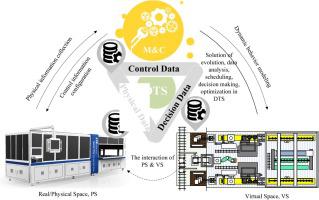Journal of Manufacturing Systems ( IF 12.1 ) Pub Date : 2021-02-23 , DOI: 10.1016/j.jmsy.2021.02.001 Feng-Que Pei , Yi-Fei Tong , Ming-Hai Yuan , Kun Ding , Xi-Hui Chen

|
With the development of intelligent manufacturing (IM), the Digital twin (DT) has become an important means to the evolution mechanism of the process. Many researchers pay attention on the realization of DT in different industries. Based on the DT and Digital Twin Shop Floor (DTS) model, a novel, high throughput metrology method is proposed in the process quality monitoring and control of the Series Solar Cell Production Line (SSCPL) for detailed performance analysis. The variance of individual loss parameters and their impact on quality performance are quantified and mapped into the virtual space. The nature of their distributions and correlations provide great insights about quality loss mechanisms in process monitoring, helping to prioritize efforts for optimizing the control of the SSCPL in the physical space. Additionally, the parameters can be tied back to the physical space, allowing the data to be used directly for the control in the manufacturing. The data-loop of “Autonomous perception of process parameters - Dynamic behaver mapping - Online monitoring - Online data analysis - Parameters configuration & control” can be obtained in the model. This paper provides an application paradigm for DT and IM.
中文翻译:

太阳能电池生产线质量监控的数字孪生
随着智能制造(IM)的发展,数字孪生(DT)已成为过程演变机制的重要手段。许多研究人员关注不同行业中DT的实现。基于DT和数字孪生车间(DTS)模型,在串联太阳能电池生产线(SSCPL)的过程质量监视和控制中,提出了一种新颖的高通量计量方法,以进行详细的性能分析。量化各个损失参数的方差及其对质量性能的影响,并将其映射到虚拟空间中。它们的分布和相关性的性质为过程监控中的质量损失机制提供了深刻的见解,有助于优先考虑在物理空间中优化SSCPL控制的工作。此外,这些参数可以绑定到物理空间,从而可以将数据直接用于制造中的控制。在模型中可以获得“过程参数的自动感知-动态行为者映射-在线监视-在线数据分析-参数配置与控制”的数据循环。本文提供了DT和IM的应用范例。



























 京公网安备 11010802027423号
京公网安备 11010802027423号